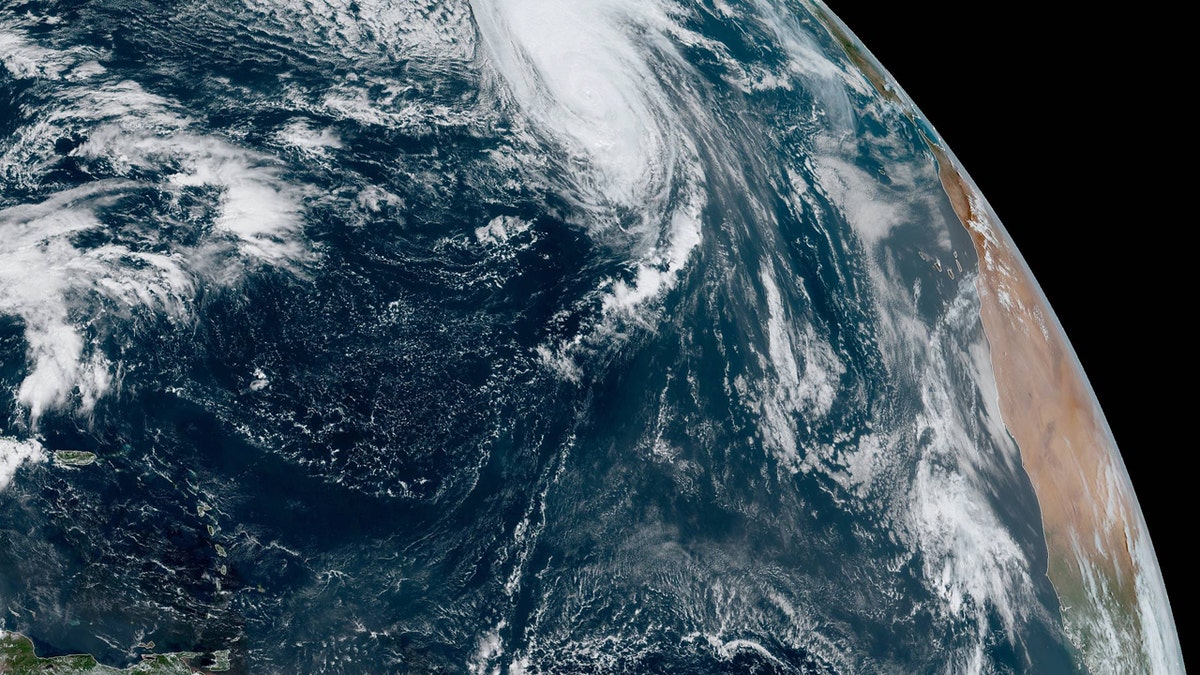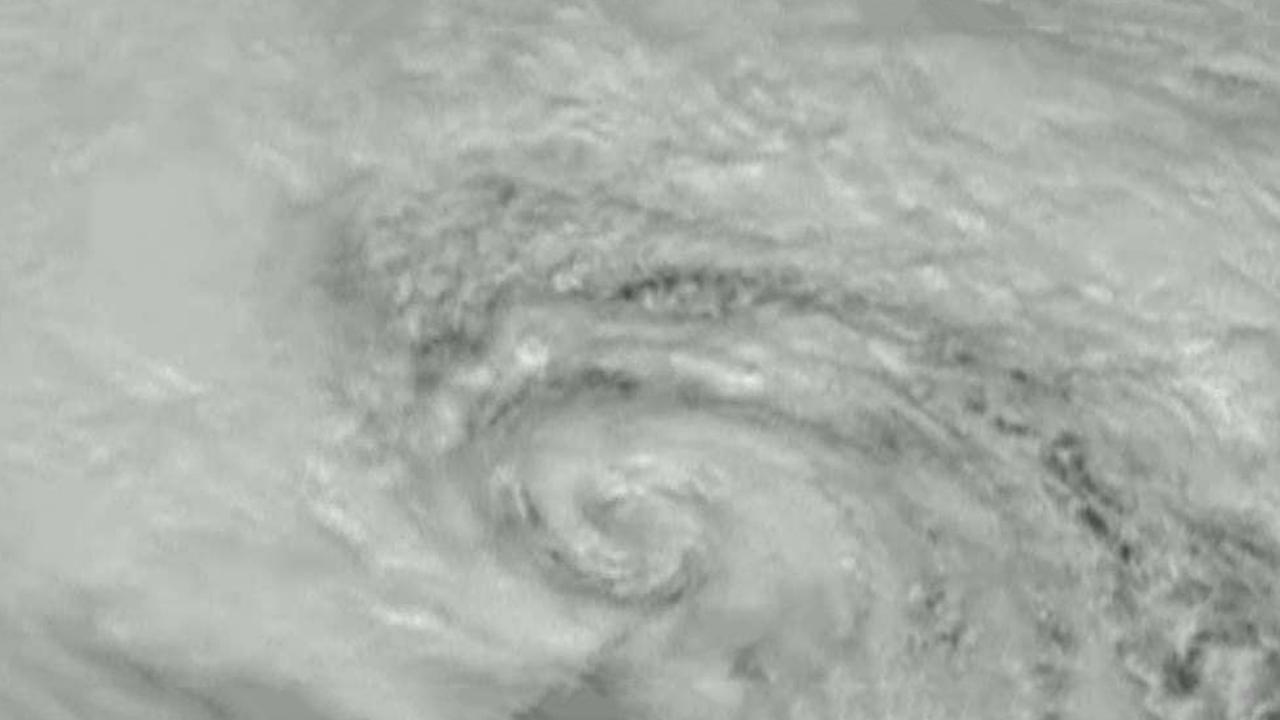2019 Atlantic Hurricane season comes to an end: Here's how it stacked up
2019 Atlantic Hurricane season was an above-normal season with 12 named storms, six hurricanes, and three major hurricanes. NOAA is now asking people to prepare for the season ahead.
Get all the latest news on coronavirus and more delivered daily to your inbox. Sign up here.
While the global average number of tropical cyclones has not increased in the last four decades, a new study says climate change has been influencing where exactly those deadly storms rage.
The National Oceanic and Atmospheric Administration-led research published in Proceedings of the National Academy of Science found that between 1980 and 2018, there was an uptick in the number of storms in the North Atlantic and Central Pacific ocean basins.
“We show for the first time that this observed geographic pattern cannot be explained only by natural variability,” Hiroyuki Murakami, the study's lead author and climate researcher at NOAA’s Geophysical Fluid Dynamics Laboratory, said in a news release on Wednesday.
HURRICANE FORECASTS WILL SEE SOME CHANGES FOR 2020: HERE'S WHAT WILL BE DIFFERENT
According to NOAA, a tropical cyclone is defined as a rotating, "organized system of clouds and thunderstorms" that originates over tropical or subtropical waters, and has a closed low-level circulation.

A variety of factors have been influencing where tropical cyclones have been forming over the last four decades, according to a new study. (NOAA/GOES East)
Depending on where the storms are, they are either hurricanes, cyclones, tropical storms, typhoons, or tropical depressions.
According to the new study, the increase of tropical cyclones in the North Atlantic and Central Pacific basins between 1980 and 2018 came with a corresponding decline in storms in the western Pacific and in the South Indian Ocean.
A map released by NOAA shows where the changes are, with reds, oranges, yellows showing areas with the greatest increase compared to those in blue and green, where fewer storms were recorded.

The areas that saw an increase in the frequency of tropical cyclones from 1980 to 2018 are marked in red, yellow, and orange, while areas that saw a decrease are shaded in blue and green. (NOAA)
According to NOAA, Murakami used climate models to determine that greenhouse gases, manmade aerosols including particulate pollution, and volcanic eruptions were all influencing where tropical cyclones were hitting as part of the study.
"Greenhouse gases are warming the upper atmosphere and the ocean," the agency states. "This combines to create a more stable atmosphere with less chance that convection of air currents will help spawn and build up tropical cyclones."
WHAT WAS THE WORST HURRICANE TO HIT THE US? HERE ARE THE DEADLIEST STORMS EVER
A decline in particulate pollution and other aerosols that help create clouds and reflect sunlight, due to pollution control measures, may actually increase the warming of the ocean by allowing more sunlight to be absorbed by the seas, according to Murakami.
WHAT WAS THE WORST HURRICANE TO HIT THE US? HERE ARE THE COSTLIEST STORMS
One of the reasons for the active tropical cyclones in the North Atlantic over the last 40 years is diminishing manmade aerosols, Murakami said.
In the period of the study, volcanic eruptions also were found to have temporarily altered the location where tropical cyclones were forming.
CLICK HERE FOR MORE WEATHER COVERAGE FROM FOX NEWS
The major volcanic eruptions in El Chichón in Mexico in 1982 and Pinatubo in the Philippines in 1991 caused the atmosphere of the northern hemisphere to cool and resulted in less heat in the oceans, which shifted tropical cyclone activity southward for a few years, according to the study.
Since 2000 ocean warming resumed, which the study said led to increased tropical cyclone activity in the Northern Hemisphere.
What about in the future?

A new study says there's been an uptick in the number of storms in the North Atlantic and Central Pacific ocean basins, with has corresponded with a decline in storms in the western Pacific and in the South Indian Ocean. (Joshua Stevens/NASA Earth Observatory)
A continued increase in greenhouse gases could lead to an overall decrease in tropical cyclones worldwide by the end of the century, according to the new study.
Tropical cyclones in the North Atlantic, for instance, are projected to decrease by 2100 due to the “calming” effect of greenhouse gases. The annual average of 86 tropical cyclones is projected to decrease to about 69 worldwide by the end of the 21st century.
"Declines are projected in most regions except in the Central Pacific, including Hawaii, where tropical cyclones activity is expected to increase," according to NOAA.
CLICK HERE FOR THE FOX NEWS APP
But while there may be fewer storms, many of the cyclones that form are expected to be "significantly more severe" due to rising sea surface temperatures that fuel the intensity and destructiveness of such storms.
“We hope this research provides information to help decision-makers understand the forces driving tropical cyclone patterns and make plans accordingly to protect lives and infrastructure,” Murakami said.
While the NOAA Climate Prediction Center will provide its initial seasonal outlook for the Atlantic basin in May, researchers at Colorado State University are predicting an above-average hurricane season this year, citing the likely absence of El Niño as a primary factor.
The 2020 Atlantic Hurricane Season runs from June 1 to Nov. 30, and will include the names: Arthur, Bertha, Cristobal, Dolly, Edouard, Fay, Gonzalo, Hanna, Isaias, Josephine, Kyle, Laura, Marco, Nana, Omar, Paulette, Rene, Sally, Teddy, Vicky, and Wilfred.




